Intimacy, peace and majesty. Vincent van Gogh's Starry Night.
In a letter to Theo, Vincent van Gogh (Zundert, 1853 - Auvers-sur-Oise, 1890) wrote, dated June 18, 1889 from Saint-Rémy-de-Provence, that he was working on a landscape with olive trees and "a new study of a starry sky." Indeed, the celebrated Dutch painter used to update his beloved brother on the latest work he was doing and often sent him in addition studies, drawings and paintings to get his opinion about his works. That new starry sky study would become one of his greatest masterpieces, still celebrated worldwide by the general public: the Starry Night. A painting that still fascinates and enchants anyone who observes it because of that sky that seems to be in motion thanks to the long, sinuous and color-laden brushstrokes that van Gogh imprinted on the canvas: the dark blue binds and combines with blue and white in almost circular movements, creating an extraordinary dynamic effect. The sky, dotted with large stars, around which a bright halo is created that intensifies its suggestion, and adorned by a huge moon, also very bright, in the upper right, and by a star much brighter than the others, in the center, near the cypress tree, characterized by a white halo (which is none other than the planet Venus, which van Gogh himself, in a letter to his brother Theo, calls the “morning star”) is the real protagonist of the entire painting. The village with the tall bell tower towering in the center, reminiscent of the architectural structures of Dutch churches, becomes tiny and seems almost to disappear under that extraordinary sky that invites one to get lost in its stars, its colors and its wave-like motions of the sea.
“This morning from my window I looked for a long time at the countryside before the rising of the Sun, and there was only the morning star, which seemed very large. Daubigny and Rousseau have already painted this, expressing all the intimacy, all the peace and majesty, and in addition adding such a deep feeling, so personal. I don’t mind these emotions,” Vincent wrote to Theo between May 31 and June 6, 1889. Van Gogh painted his Starry Night in June 1889 itself, and most likely just before dawn on the night of June 19 that year. Astronomer Ed Krupp of the Griffith Observatory in Los Angeles has ascertained that the celebrated work was made on that date, as he and Albert Boime recreated the 4 a.m. starry sky of June 19, 1889, and noted the exceptional similarity to that depicted in the Van Gogh work, with the only difference being that the moon did not appear to be crescent like the one in the painting, but gibbous. As for Venus, the planet “had emerged from the darkness in the morning twilight in mid-May and had become more prominent and larger in the morning sky through June,” as Harvard astronomer Charles A. Whitney stated in 1996 in his The skies of Vincent van Gogh. Therefore, at the time Starry Night was made, Venus was at its brightest and greatest. “Once again I have allowed myself to make stars too big,” van Gogh wrote to the painter ÉmileBernard on November 26, 1889, referring to Starry Night.
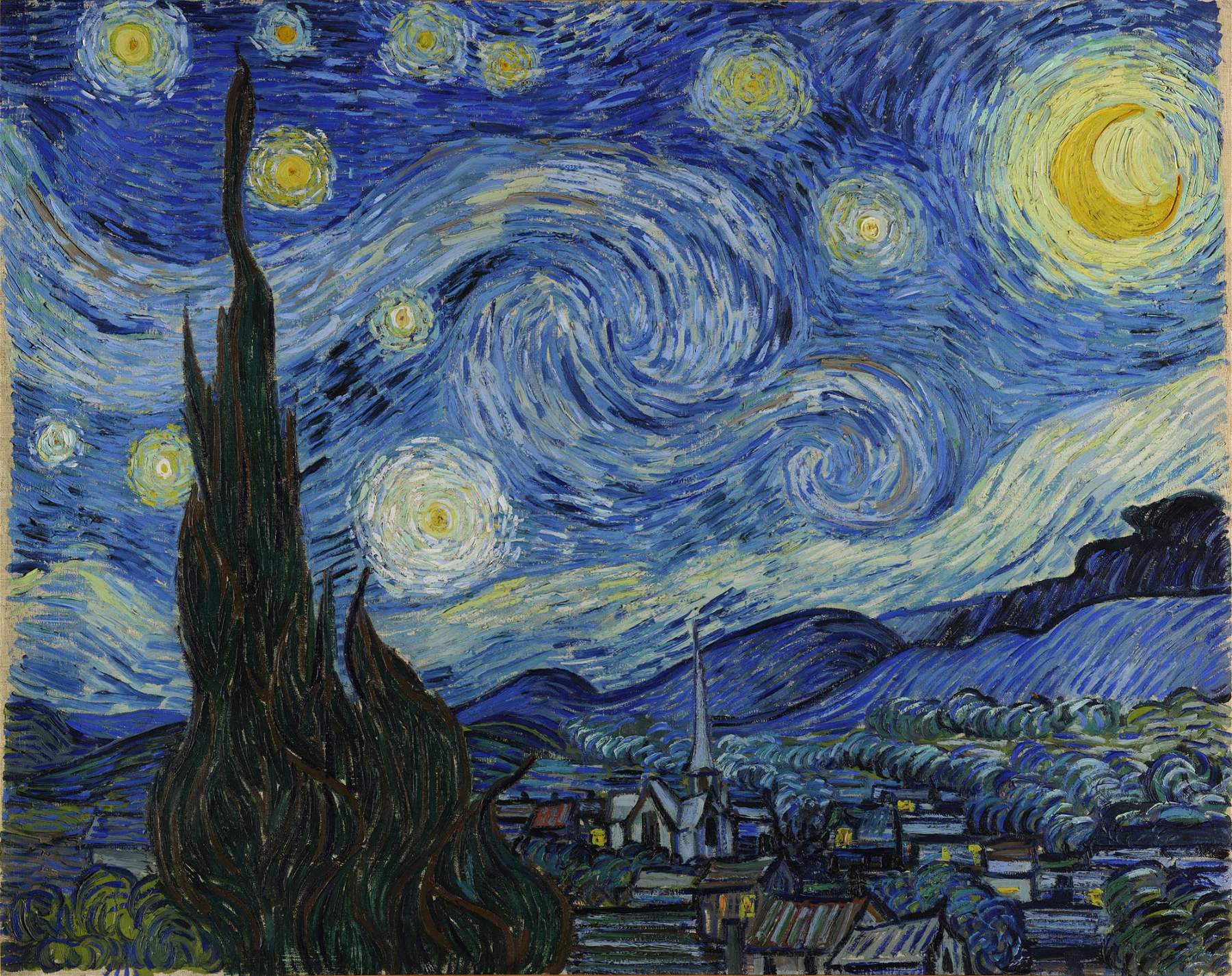 |
| Vincent van Gogh, Starry Night (June 1889; oil on canvas, 73.7 x 92.1 cm; New York, Museum of Modern Art) |
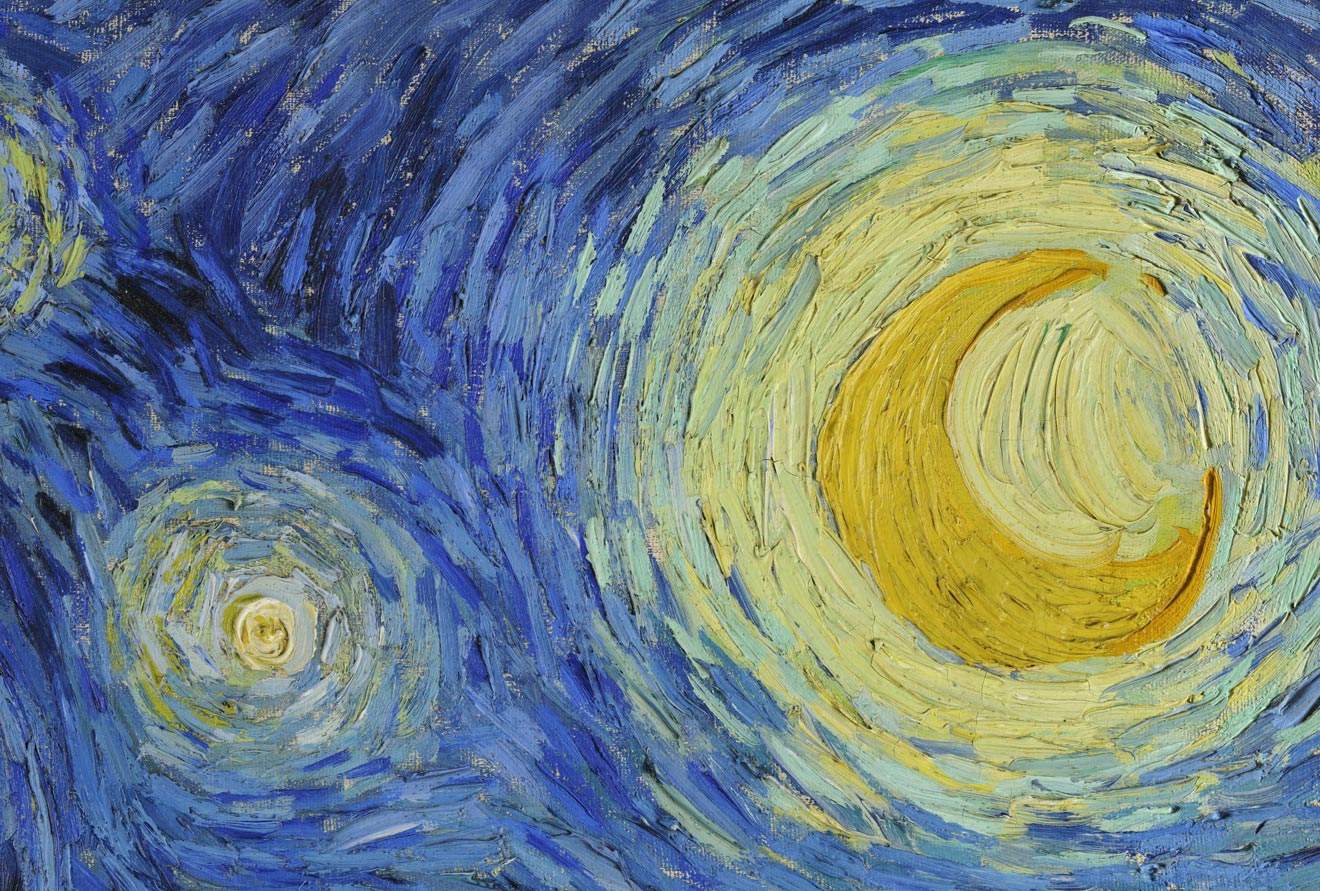 |
| Vincent van Gogh, Starry Night, detail |
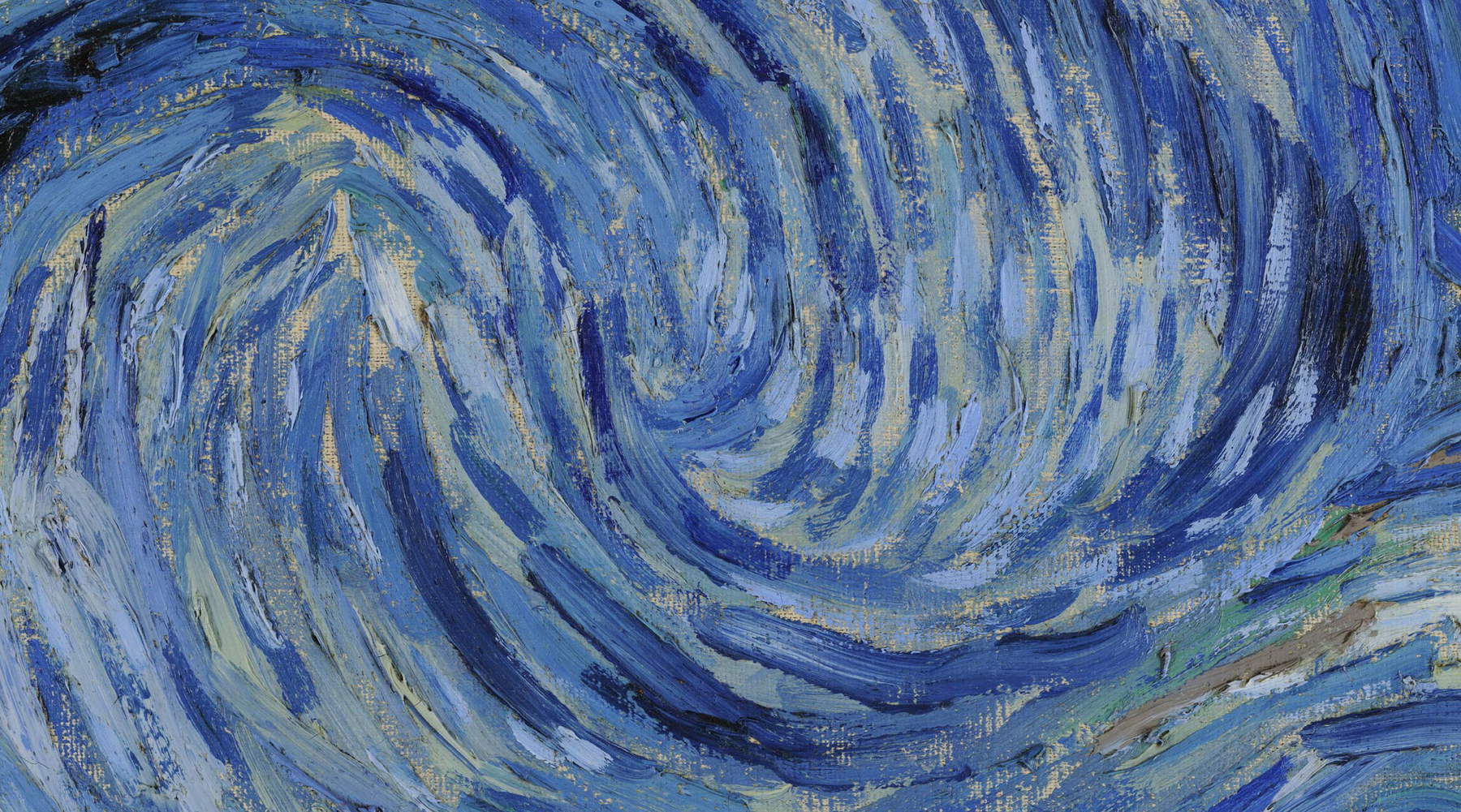 |
| Vincent van Gogh, Starry Night, detail |
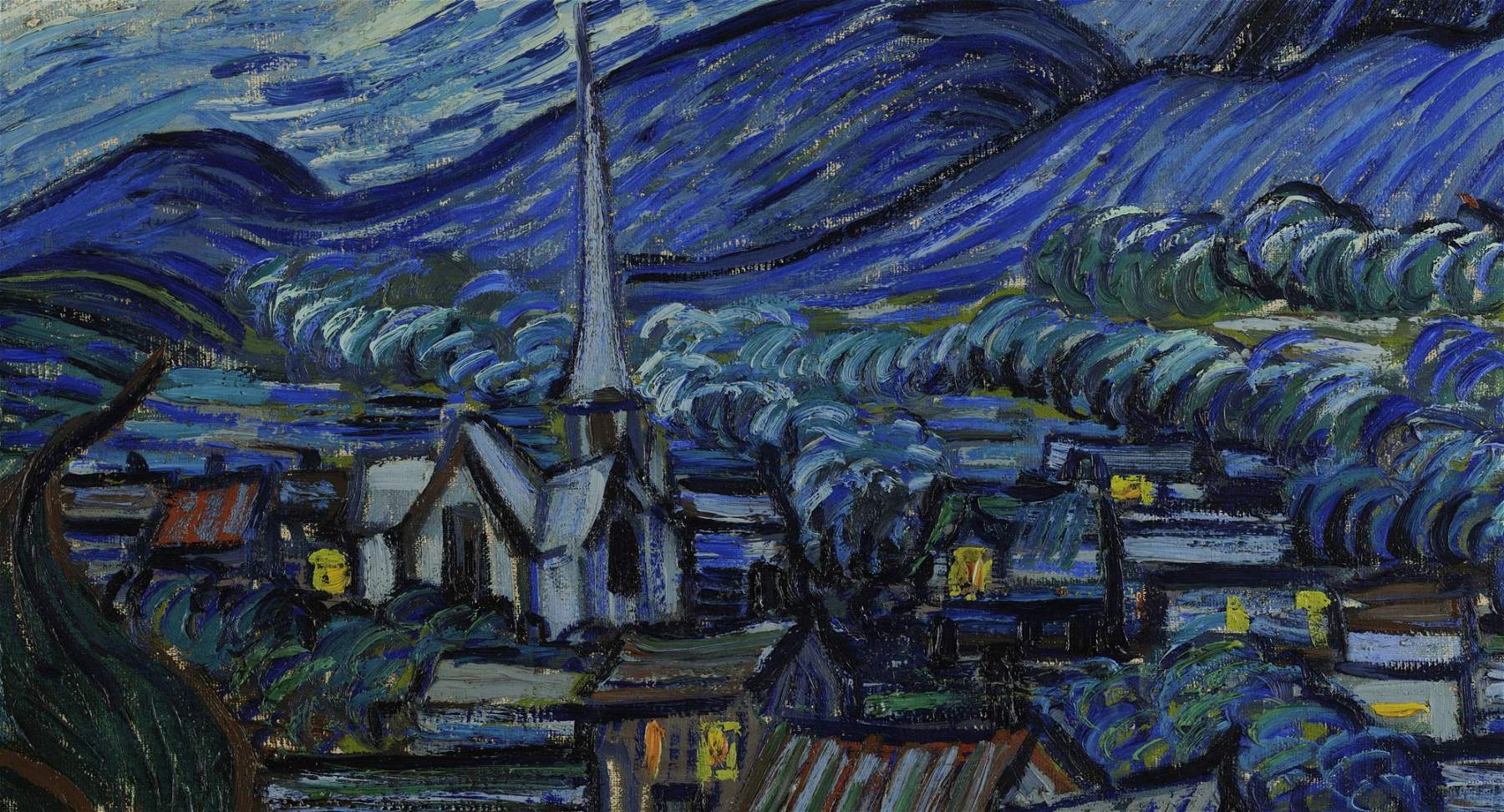 |
| Vincent van Gogh, Starry Night, detail |
The painter was inspired by the view of the landscape from the window of theSaint-Paul-de-Mausole psychiatric hospital in Saint-Remy-de-Provence, in southern France, where he was hospitalized as a result of his mental instability.He stayed there for twelve months, from May 1889 to May 1890, and executed numerous works here, more than two hundred drawings and paintings, as he was allowed to leave the facility to paint. In painting indeed, as in nature, he was able to find solace from his imbalances. It is fair to say that he was inspired by that landscape, because the painting is a combination of reality and imagination: first of all, from the window of the mental hospital he could not possibly see the picturesque village nestled under the hills (as already stated, he probably had in mind a village in his homeland, Holland), the cypress tree rising like a flame on the left is depicted closer than it really was, and the sky is mostly an expression of a mood, a feeling, those emotions he had mentioned in the letter to Theo written in late May-early June 1889. Also from the same period are two studies of “bottle-green” cypress trees: often certain elements are repeated within his works, as in the case of the cypress trees.
His view of the surrounding countryside is thus altered by the memories and emotions it evokes in him. It therefore becomes an emotional landscape, created by the flow of the artist’s feelings and innermost part. “Imagination is a capacity that must be developed, and the only one that allows us to create a more exhilarating and consoling nature than what only a glimpse into reality allows us to perceive. A starry sky, for example, well-that is something I would like to try to do,” he had already written almost a year before Starry Night, on April 12, 1888, to Émile Bernard.
The idea of putting a starry sky on canvas had therefore already dawned on him in 1888, but he became so fascinated by it during a walk near Les Saintes-Maries-de-la-Mer, in Camargue, on the banks of the Rhone, that in September of that year he made the Starry Night on the Rhone, a work preserved at the Musée d’Orsay in which he renders all those effects of the night given by the city lights reflecting on the water and the striking brilliance of the stars in the blue sky.
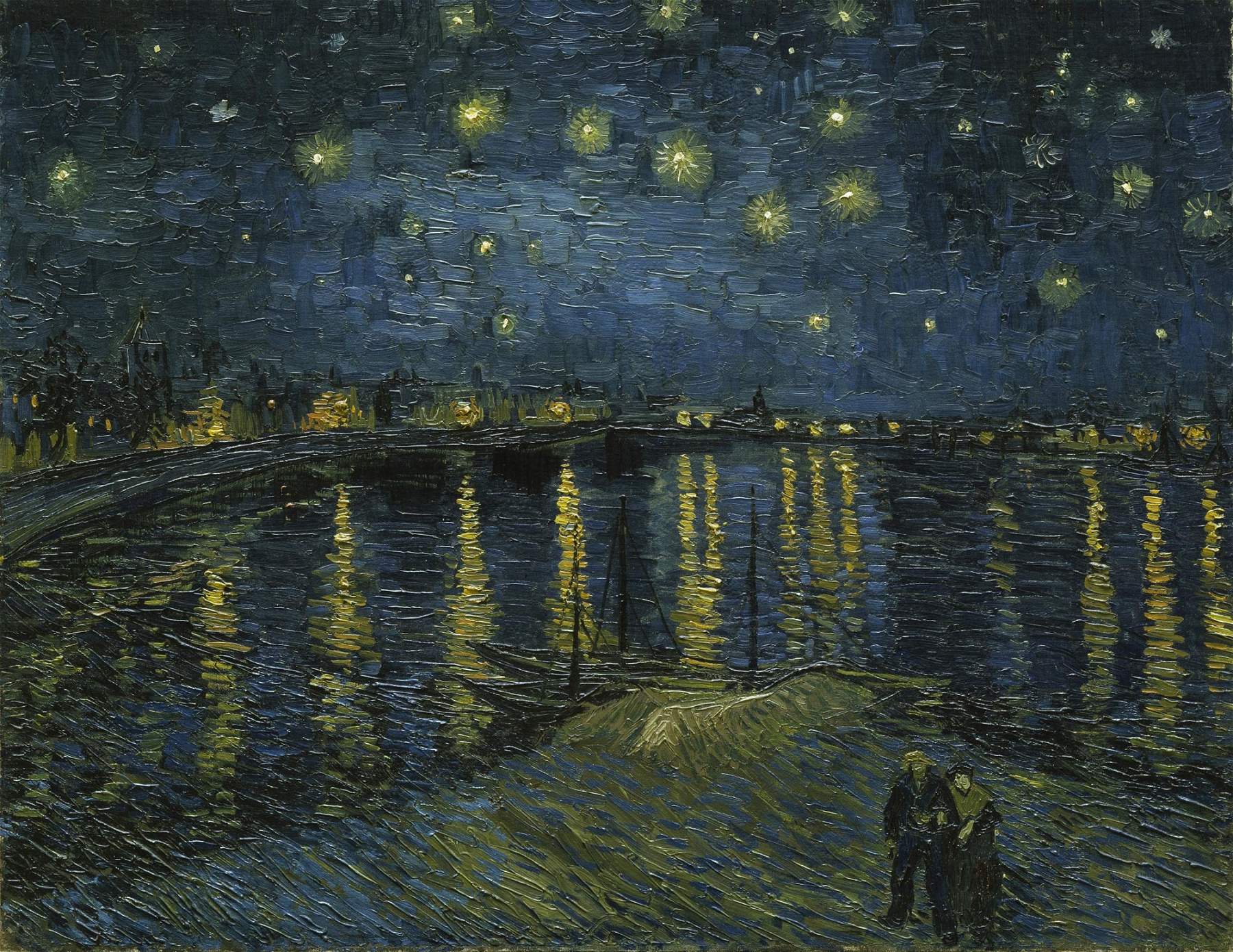 |
| Vincent van Gogh, Starry Night on the Rhone (September 1888; oil on canvas, 72.5 x 92 cm; Paris, Musée d’Orsay) |
“I often have the impression that the night is richer in color when compared to the day,” he said, and with these words he described to his brother Theo, in a letter dated June 4, 1888, the impression made on him by the star-studded sky he had been able to admire while walking in Saintes-Maries-de-la-Mer: “The deep blue sky was dotted with clouds of a deeper than basic blue, of an intense cobalt, and other clouds of a lighter blue, of the milky whiteness of the milky ways. On the blue background twinkled clear stars, green, yellow, white, light pink, brighter than the precious stones we see even in Paris - so it was appropriate to say: opals, emeralds, lapis lazuli, rubies, raffyres. The sea was of a very deep ultramarine blue - the beach of a purplish tone, and it also seemed to me reddish, with bushes on the dune, bushes the color of Prussian blue.”
A description of blues and blues with milky white brushstrokes that also fits New York MoMA’s Starry Night : in fact, as already pointed out, that sky comes from imagination, memory and flights of the mind that are lost in the air like those circular wave-like movements that characterize the painting.
Vincent van Gogh sent the work to his brother Theo in September 1889, when the latter was living in Paris. When Theo died in January 1891, just a few months after Vincent’s, Starry Night was kept by Jo, Theo’s widow. From 1900 onward it passed into the estates of various people, including the poet Julien Leclercq and the painter and friend of Gauguin Émile Schuffenecker. From the latter Jo repurchased the painting to sell it to the Oldenzeel Gallery in Rotterdam. After being purchased by a small town, it then came to the collections of gallery owner Paul Rosenberg, and from there, in 1941, it was purchased by the Museum of Modern Art, where it remains today. There is also a pen drawing of Starry Night: also made in 1889, it is kept in Moscow, at the Schusev State Museum of Architecture.
Among the masterpieces in the history of world art, van Gogh’s Starry Night is undoubtedly one of the most evocative and dreamlike, and the magic of that sky will be immortal, just as it is for the greatest works ever created.
Warning: the translation into English of the original Italian article was created using automatic tools. We undertake to review all articles, but we do not guarantee the total absence of inaccuracies in the translation due to the program. You can find the original by clicking on the ITA button. If you find any mistake,please contact us.





























